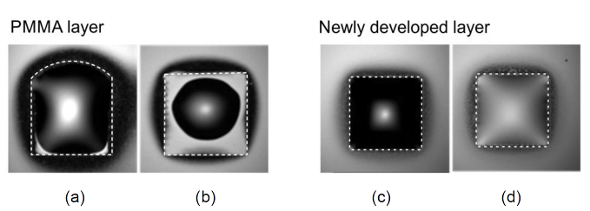Internationale Partnersuche
Innovation & Technologie Angebot
Wetting-control polymeric surface-layer for printed electronics
Country of Origin: Slovenia
Reference Number: TOSI20200417001
Publication Date: 17 April 2020
Summary
A Slovenian public research organization has developed a method of improving the wetting properties of surfaces by modifying the contact angle appropriately. In printed electronics applications the formation of nano-textured polymeric layers providing well-defined wetting conditions is required for high printing resolution and high stability upon drying. Partners are sought for licensing, technical and research cooperation agreements.
Description
The Slovenian public research organization is active in the research, development and education in the field of synthesis, properties and applications of materials for electronics. Additionally, the researchers are focused on the structure and dynamics of disordered and partially ordered condensed matter at the atomic and molecular level.
The regulation of wetting has an important technological role in many applications, including printing of functional inks on solid substrates, which is an essential part of printed electronics. In printed electronics, layer-on-layer printing is commonplace, such that each new pattern is printed on an inhomogeneous surface i.e. a surface with the pre-deposited layer. This can result in complex and unpredictable wetting behaviour, characterized by differing contact angles on areas with pre-deposited structures and areas which are the bare surface of the substrate.
The wetting behaviour of the ink to the surface interface is crucially important for final print resolution. Currently, inkjet resolution in printed electronics is moderate, about 50µm. To achieve higher resolution in printing electronics separate surface treatment often involving UV/ozone, plasma/corona, hydrophilic−hydrophobic coating processes, is used. The need for fast, reliable and cost-effective techniques which can adjust the wetting of arbitrary solid optical grade substrates, remains.
A polymeric layer proposed, was prepared by completely covering a glass substrate with the polymer solution and spin-coating. The polymeric layer on the substrate was dried on a hotplate, resulting in an 8 nm thick polymeric layer. The subsequent surface treatment with UV/ozone or oxygen plasma can be used to precisely control the wetting. Further post-treatment can increase the contact angle hysteresis of the surface. The coated surfaces can then be used for the printing of electronic components. The method provides a surface with a high contact angle hysteresis which has a favourable impact on the drying of printed structures.
Poly (methyl methacrylate (PMMA) is often used as a wetting control layer for glass substrate. The figure shows a printed square pattern with dimensions of 500x500 μm2 printed on PMMA-coated glass (a,b) and glass coated with a newly developed polymeric layer (c,d). A white dotted line outlines the initial shape of a printed square: (a) and (c) show the printed square immediately after printing, while (b) and (d) show the same feature after 30s of drying.
The figure (a,b) shows moderate resolution due to ink droplets over-spreading on the surface, while (c,d) shows compact printed pattern achieved by the newly developed nano-layer.
The substrates suitable for wetting-modification are not limited by size, composition, or geometry. The technology is suitable for wetting-modification of planar, non-planar and curved substrates, as the polymeric layer can be uniformly applied to these substrates. Suitable substrates include silicon wafers, glasses of various types, polished ceramic substrates, metal foils, polymers such as polyimide and other optical grade surfaces. Once an ink or other functional layer has been printed onto the polymeric layer, the polymeric layer can be removed by thermal decomposition. The process can be repeated, to print multiple patterns onto a substrate.
The polymer solution is available for demonstration. Partners sought are industrial partners in the printed electronics sector. Partners role would be to conduct testing and provide feedback. Scaling-up and manufacturing of the polymer solution can be done by the partner alone based on a licencing agreement or in cooperation based on a respective technical cooperation agreement.
Research cooperation agreements are sought to develop new wetting control layers-materials.

Advantages and Innovations
The polymeric surface layer formed by this method is a simple and inexpensive improvement to the existing technology. It has the following advantages compared to existing/known polymeric layers:
• Increases the pinning energy of the wetting liquid, and its contact angle hysteresis.
• The larger contact angle hysteresis provides higher printing resolution, a better quality of pattern definition, and better morphology of dried deposits.
• The wetting of the polymeric layer may be regulated by exposure to reactive polar species (for example, oxygen or nitrogen).
• The polymeric layer can be used for wetting adjustments of many inks (commercial silver inks, inks containing 40 vol% or more of ethylene glycol, ethanolamine, 1,3-propanediol, diethylene glycol or any other solvent with similar surface tension).
• The polymeric layer readily decomposes at temperatures higher than 350 °C.
Stage Of Development
Available for demonstration
Requested partner
Partners sought are industrial partners in the printed electronics sector. Partners role would be to conduct testing, provide feedback, scale-up and manufacture the polymer solution and apply the method in their manufacturing process. The development can be done by the partner alone based on a licencing agreement or in cooperation based on a respective technical cooperation agreement.
Research cooperation agreements are sought to develop new wetting control layers-materials for other specific combinations of inks and substrates.
Cooperation offer ist closed for requests

